Lights from the Sky, Lights from the Land: The Sun
October 20, 2020
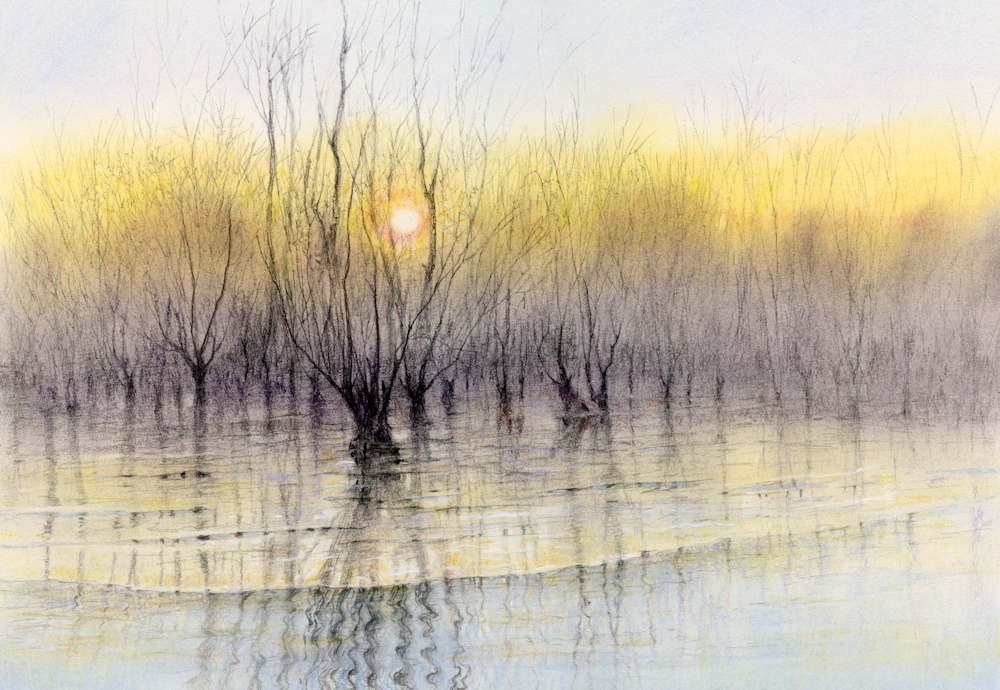
This week’s project is to depict the sun and effects of its luminosity on the landscape. As light sources, natural and manufactured are the topics for the next few weeks, I thought it would be useful to consider some general aspects of depicting luminosity.
Light sources vary in the colours they emit; some have haloes of different colours surrounding a white or paler coloured centre and others are single hued with a near white highlight at the centre. During the next few weeks we will discover some of these differences in more detail.
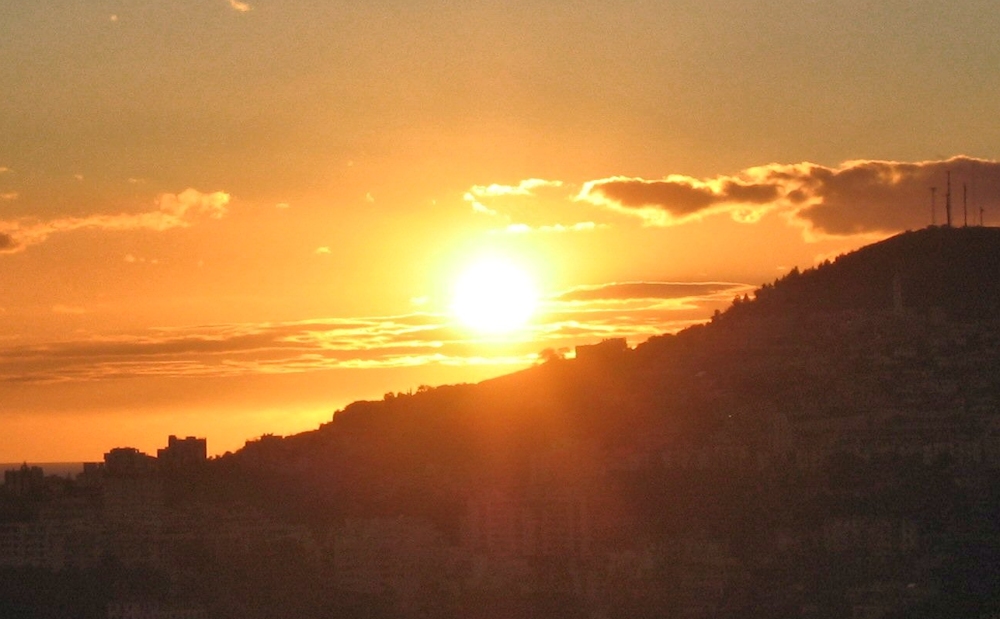
Guidelines for creating luminosity in a composition
(Some of this is rather obvious but here goes!)
1. The luminous area should be smaller than its surroundings.
2. The luminous area should be painted in paler tones than its surroundings and the highlight will be the palest tone.
3. Within the brightest part of the luminous area none of the tonal values should contrast with each other greatly. Deeper values should be painted outside this area although there may be different colours of medium tonal value outside the brightest part of the luminous area.
4. A sheen of the colours within and just outside the luminous area often pervades the entire composition. The Impressionists made great use of these effects. This can be seen in Monet’s paintings of the Houses of Parliament and the Waterloo Bridge series. The hues just outside the main illuminated feature and to a lesser extent those within the illuminated area are seen as echoes in streaks and dashes of paint, the colours that create a sheen over the surroundings area, giving the work colour unity as in the rather rough illustration below.
A link to the Pinterest board “Lights in Art” is below and you will find images of the works referenced as well as several other examples of how artists have depicted the sun and sunlight.
https://www.pinterest.co.uk/jhall1282/lights-in-art/sun/
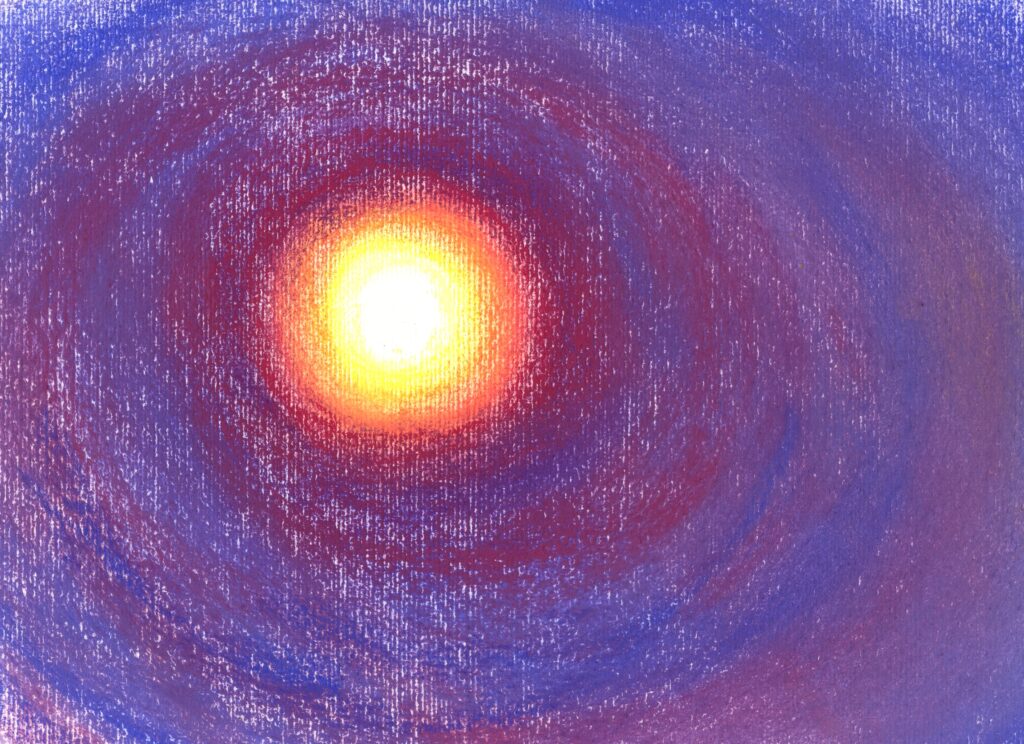
White surrounded by yellow, orange, red and purple rings; the blue surround has been streaked with mixes of the purplish red. Compare with how Monet used orange/red/purple hues in his Houses of Parliament paintings of around 1904.
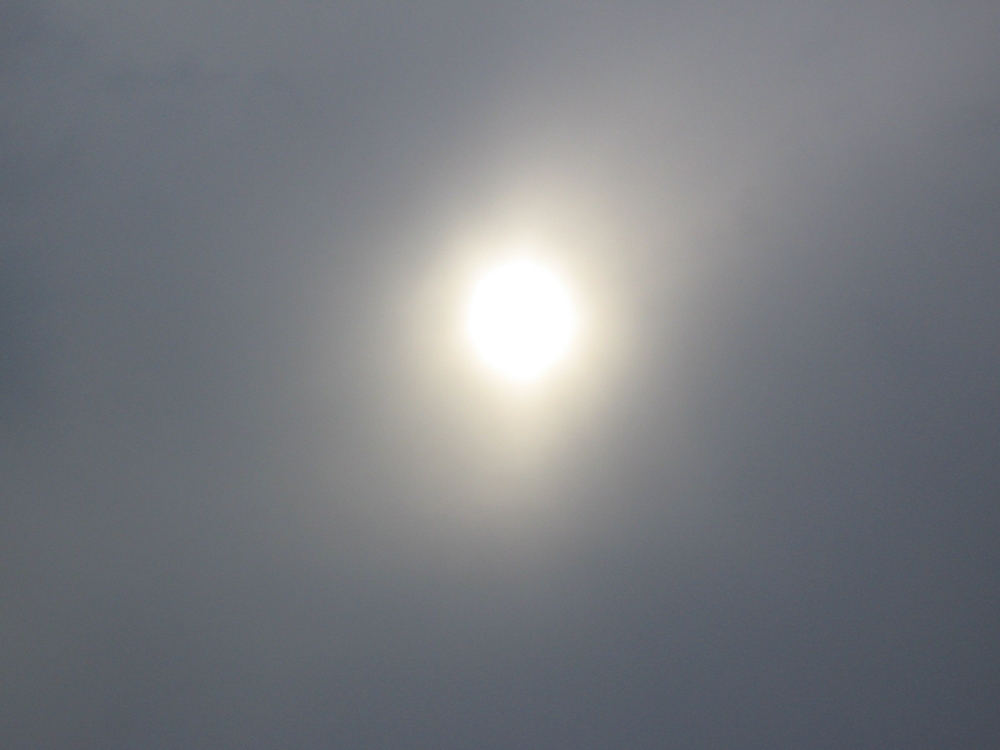
Note: white centre surrounded by less saturated (less pure) yellows and oranges than in the sunset photograph.
This sun is more like the sun in Martin Johnson Heade’s painting of “Sun over York Harbour, Maine USA”.
Colours
Luminosity may be achieved with neutral greys simply by surrounding a small white circle with rings of increasingly darker pale greys on a background of a much darker grey, or with single hue by doing the same but with a colour instead of grey.
Luminosity can also be achieved by using several hues e.g. white surrounded by yellow, then red and other colours but again choosing a darker hue for the wider area surrounding the light source.
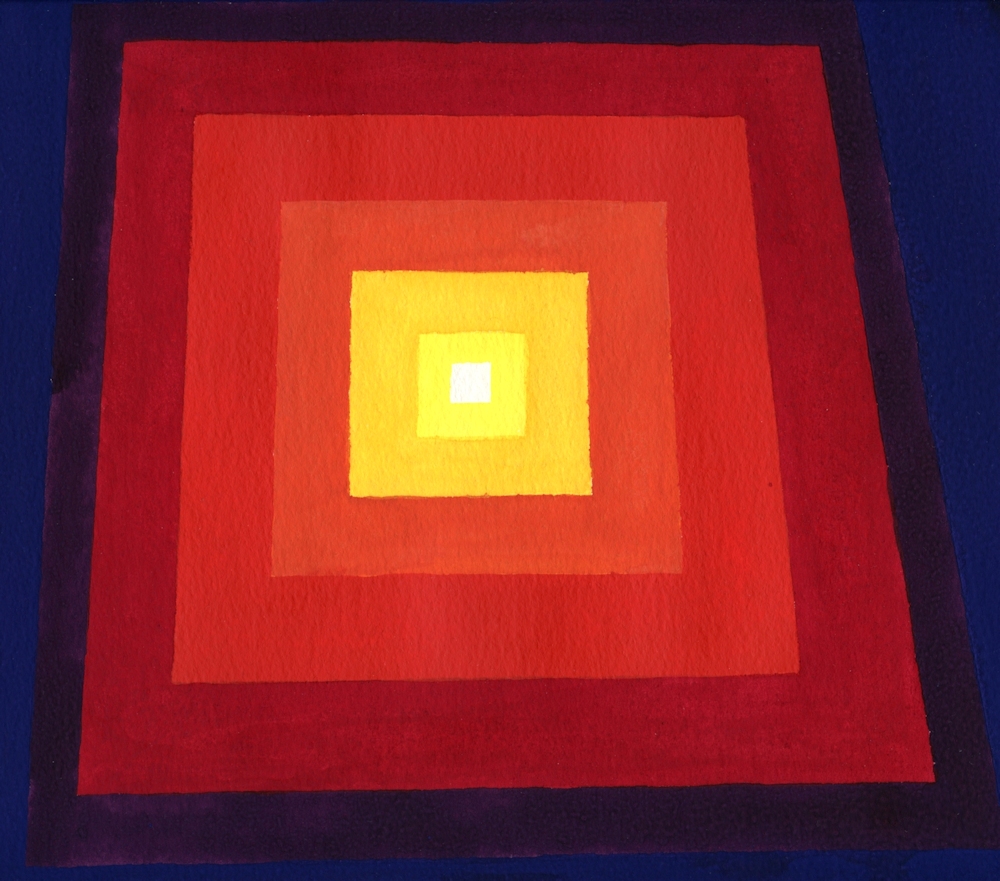
Even a white square can appear luminous!
Look at the other colours and whether they appear more or less luminous against each other.
Another way of using colour is to surround a saturated colour (pure hue) with less saturated colours or the complement of the pure hue at the centre. Again it usually works best if the surrounding hues are similar tonally or darker than the luminous area.
A good example of a pure colour being surrounded by a less saturated near complementary colour is afforded by “Impression Sunrise”, 1872 by Monet. The sun is painted as a small disc of a rather pure orange against a rather desaturated(less pure) purple cloud. The reflection of the sun is painted clearly in the water and throughout the work echoes of the orange can be seen among the purples and chromatic(coloured) grays of the rest of the composition giving the impression of the sun’s light giving a sheen over the whole work.
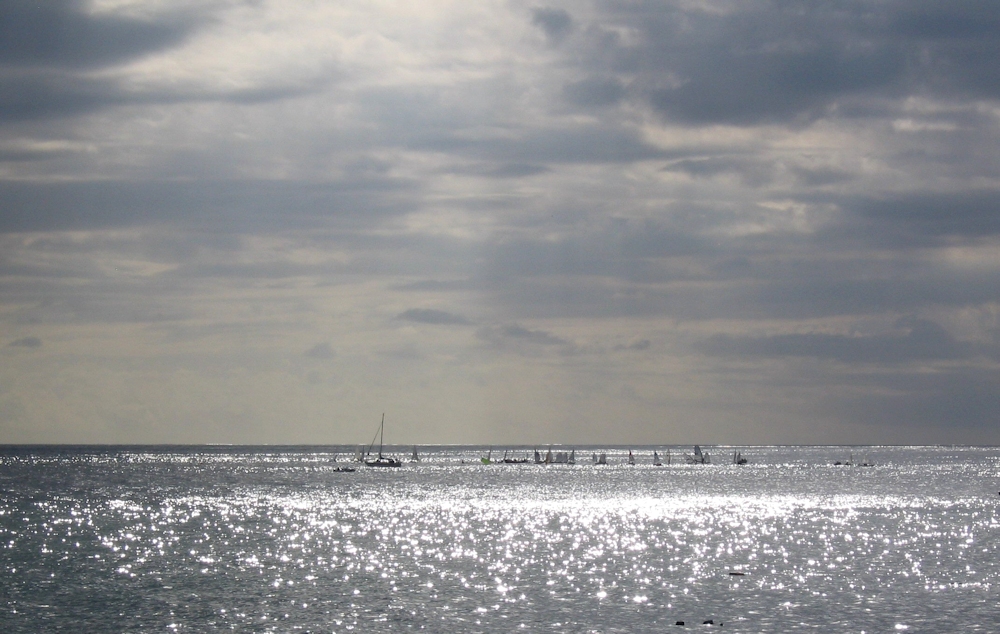
Note rather monochrome sparkle
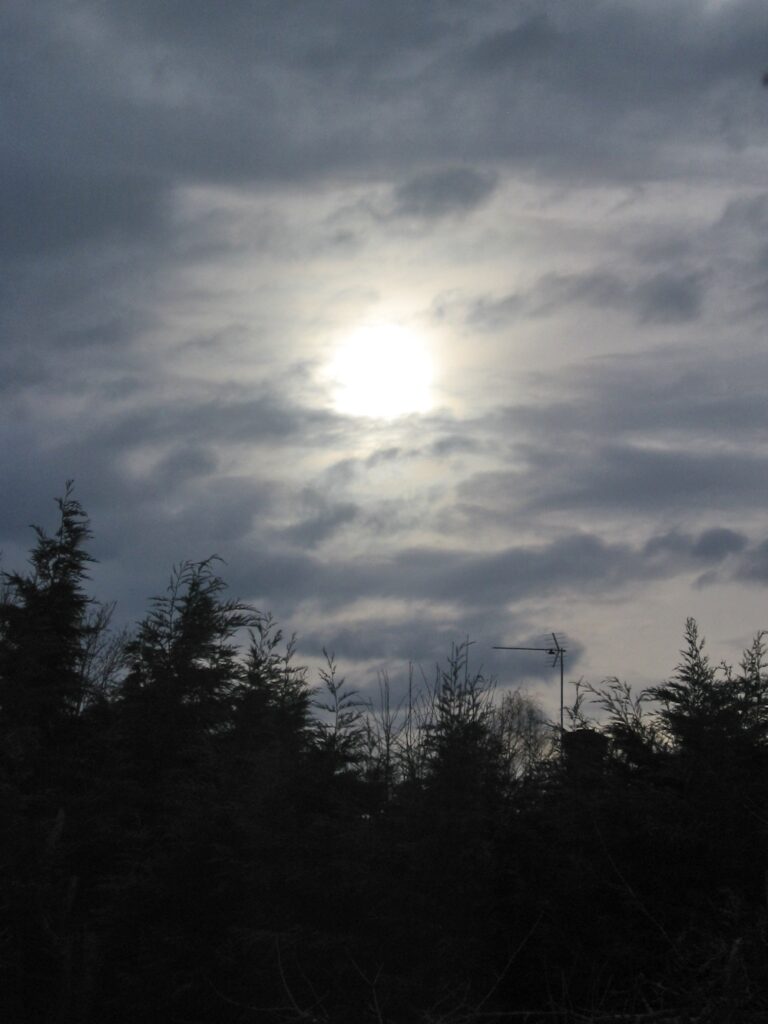
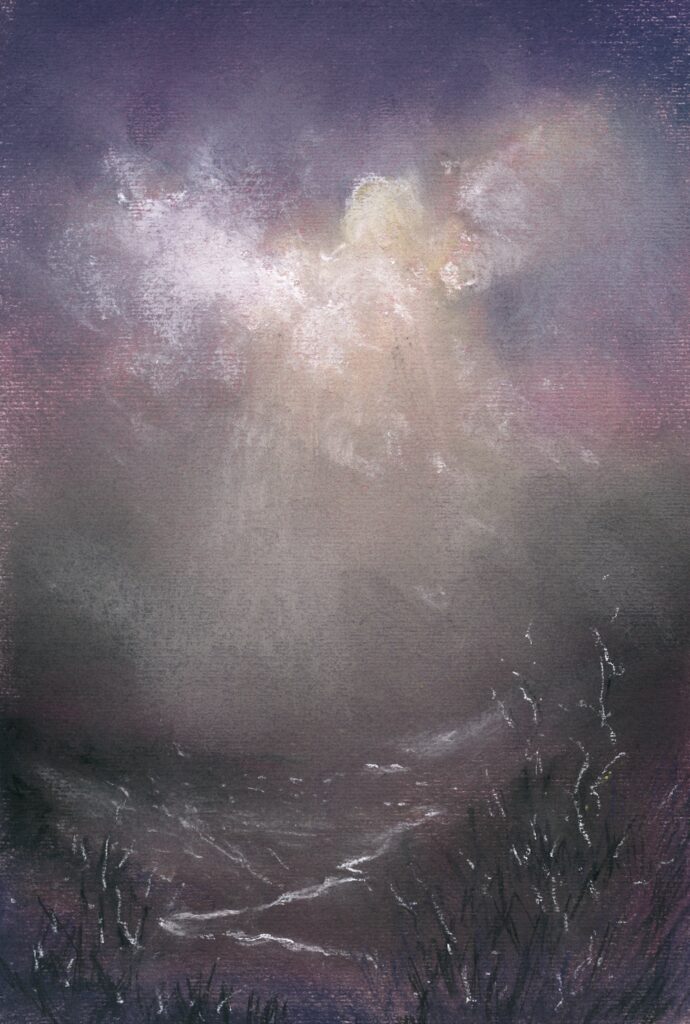
Sunlight bursting through a gap in the cloud cover and illuminating the river below.
It is of course almost impossible to depict the sun on a bright day with hardly a cloud in the sky. This is probably why most paintings of the sun involve sunsets and sunrises, or the sun in overcast conditions; its light pouring through the gaps between the clouds. Another way in which the brightness of the sun is depicted is it’s reflection in water; either as a sparkle or as a reflection of the whole sun.
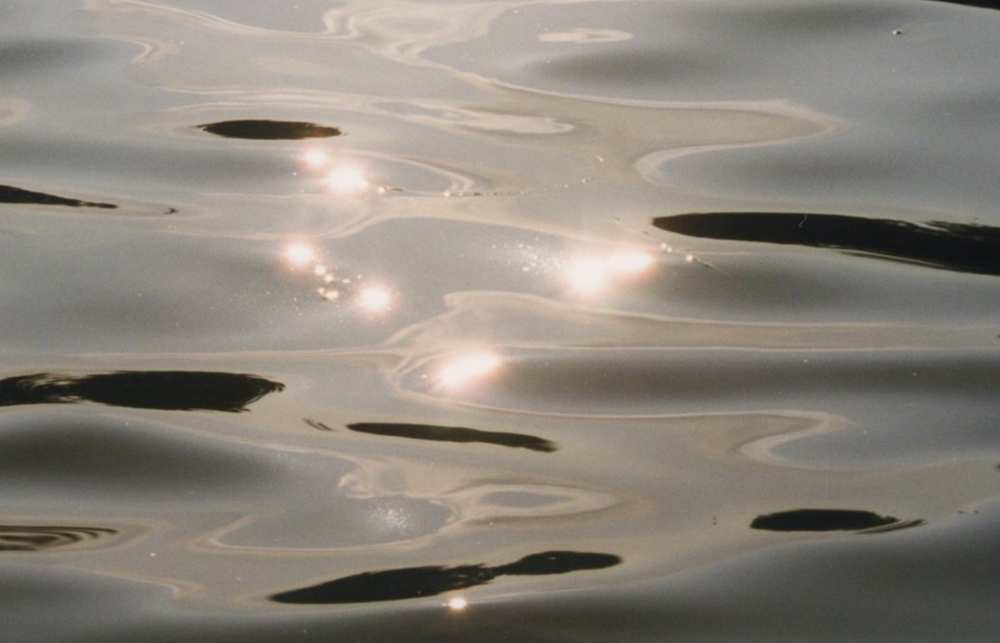
Each sparkle appears as a miniature reflection of the sun
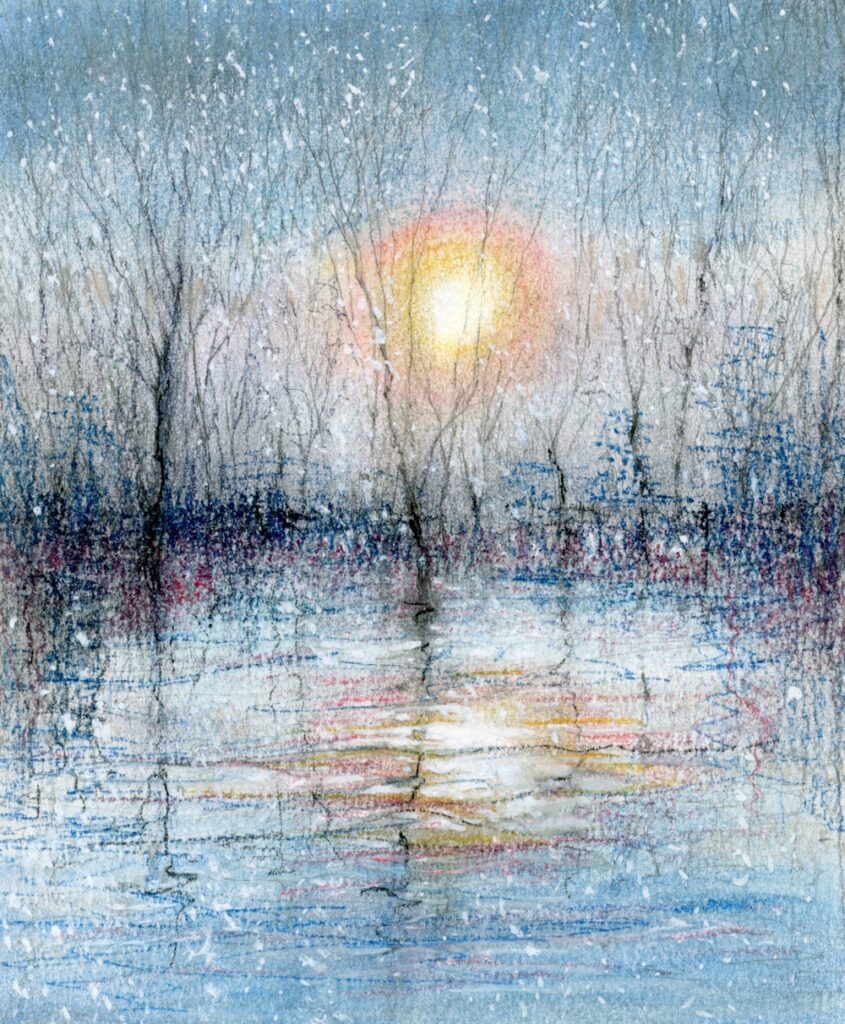
Even on the dullest day the sun appears white at the centre surrounded by a ring of pale yellow. At sunset the sun may appear white or yellow at the centre and surrounded by red orange colours or the whole sun may appear bright orange/red. The duller the day the more monochrome it appears and the sun’s reflection in water behaves in the same way.
For more ideas do visit the Pinterest Board link below.
https://www.pinterest.co.uk/jhall1282/lights-in-art/sun/
Practical
1. Experiment with making a small area look luminous using one hue and then with several hues.
2. Using pastel or watercolour or a watercolour/pastel combination make a painting where the sun is evident in the sky and may also include a reflection of the sun. The reflection may appear as the reflection of the whole sun or as a sparkle on the water.
The weather is up to you!
You may like to work your own version of one of the images on the Pinterest board, or use your own reference/imagination.
Have fun!
Your paintings:
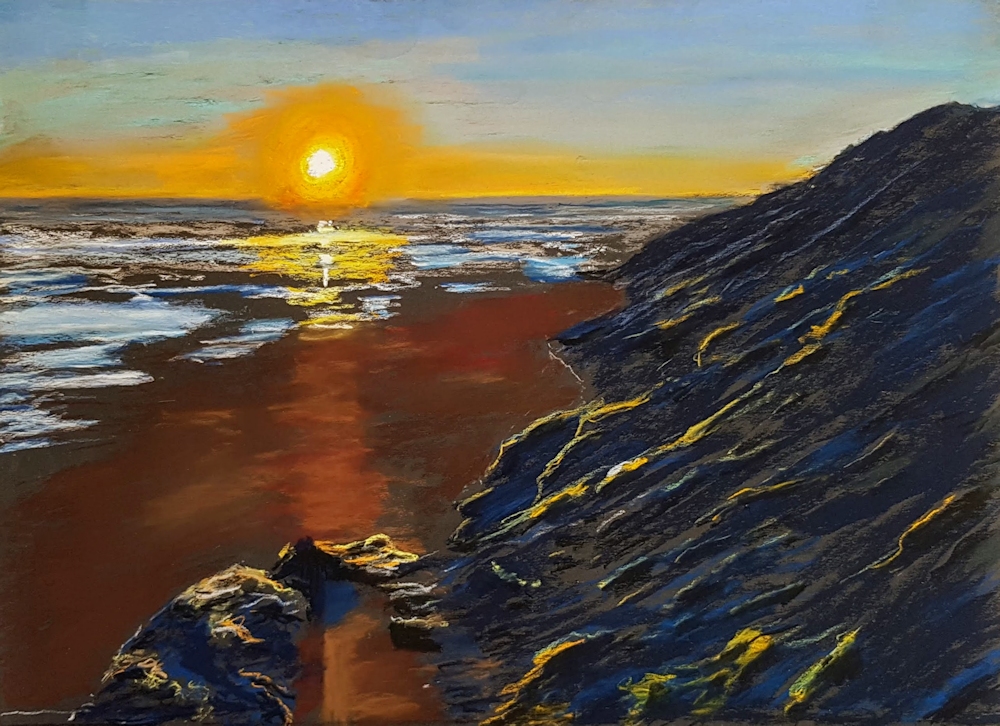
Pastel and pastel pencils on black emery paper P800 grit
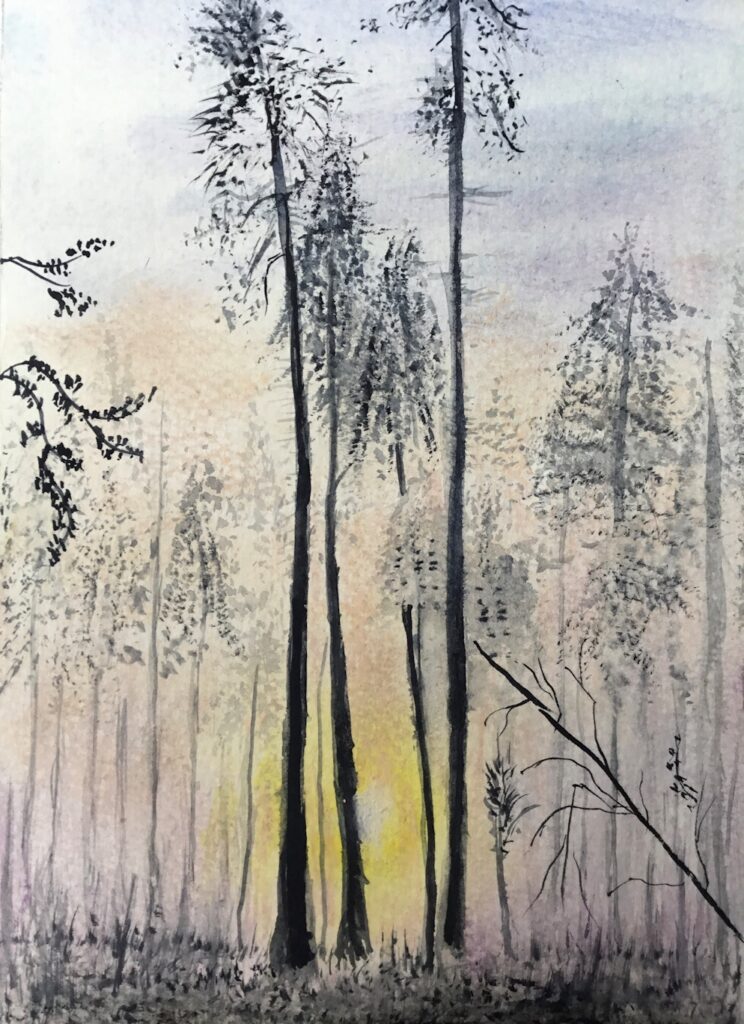
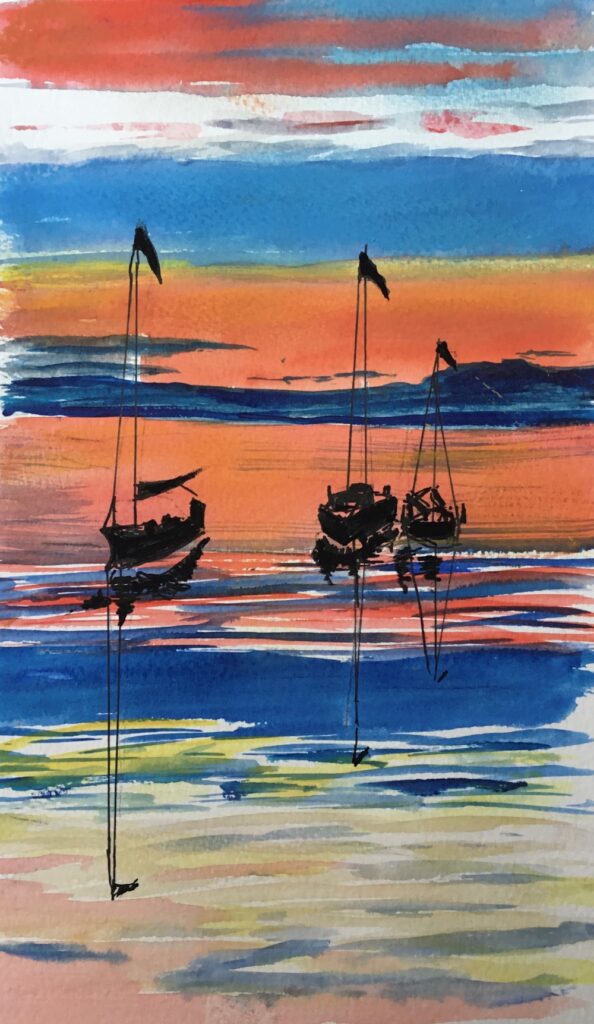
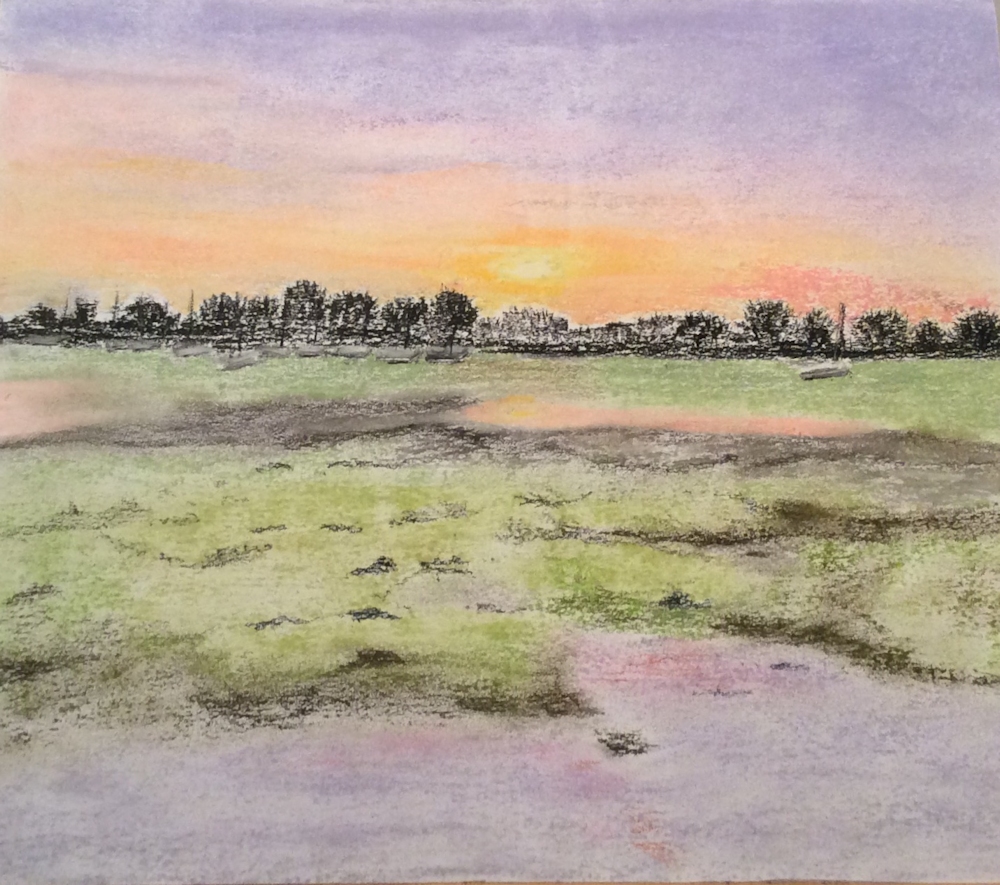
Pastel by Barbara
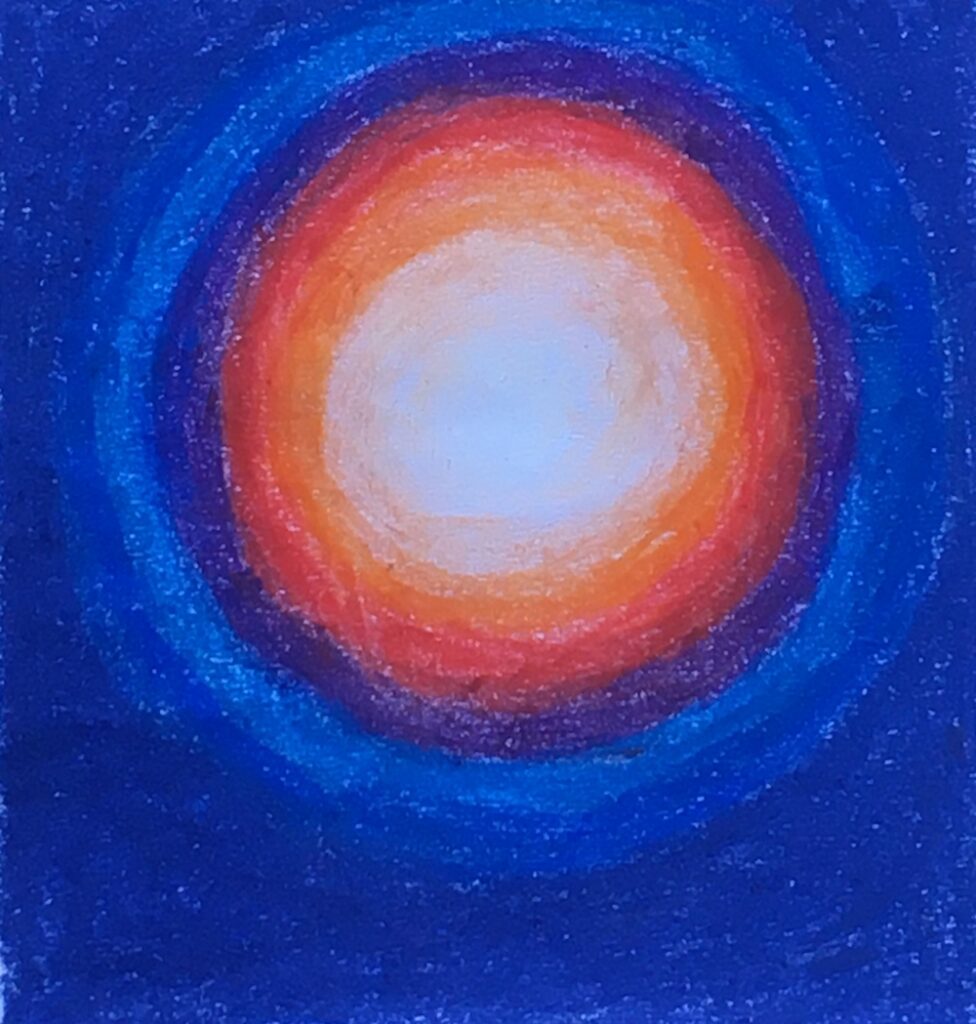
Pastel
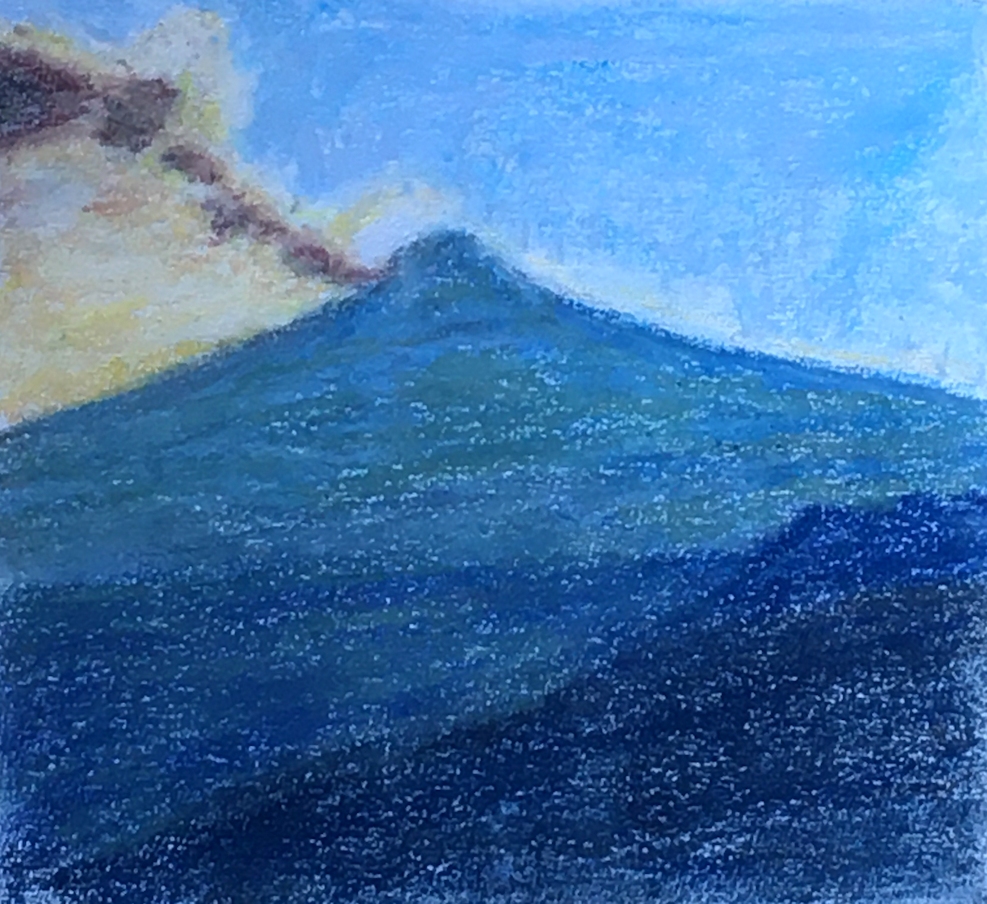
Pastel by Shirley
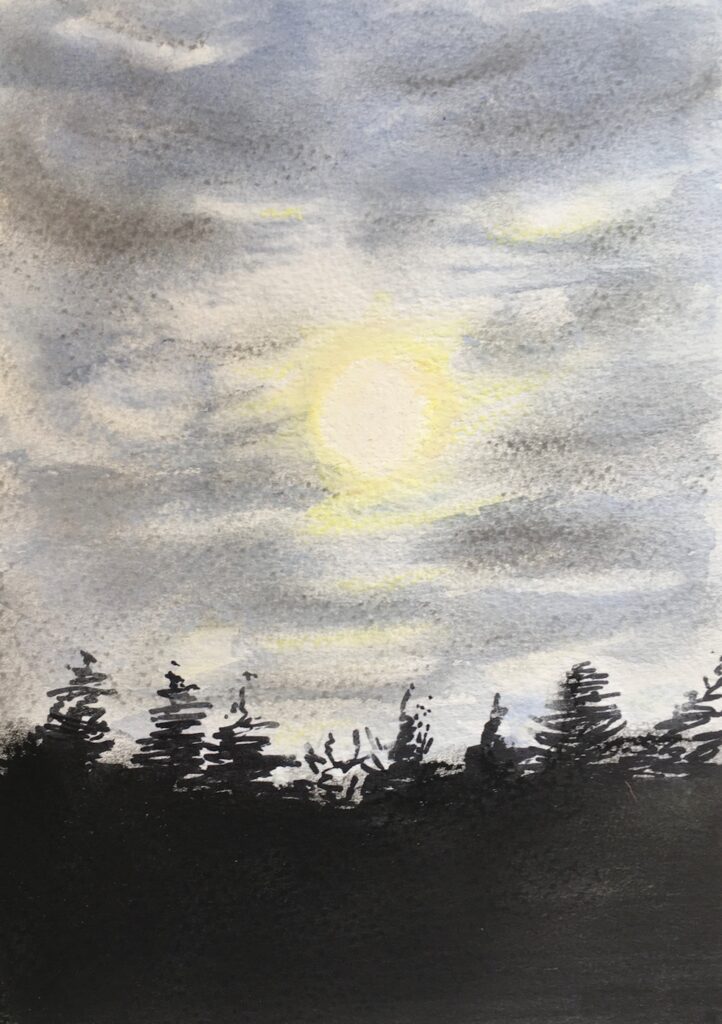
Watercolour, Sharpie Pen and Pastel
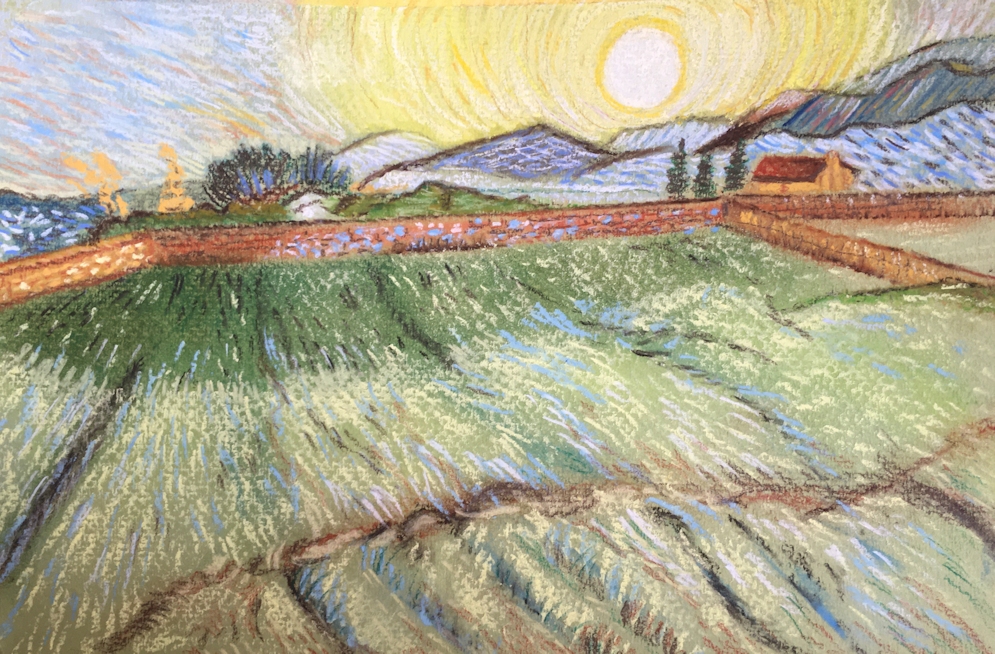
Pastel and a little Coloured Pencil
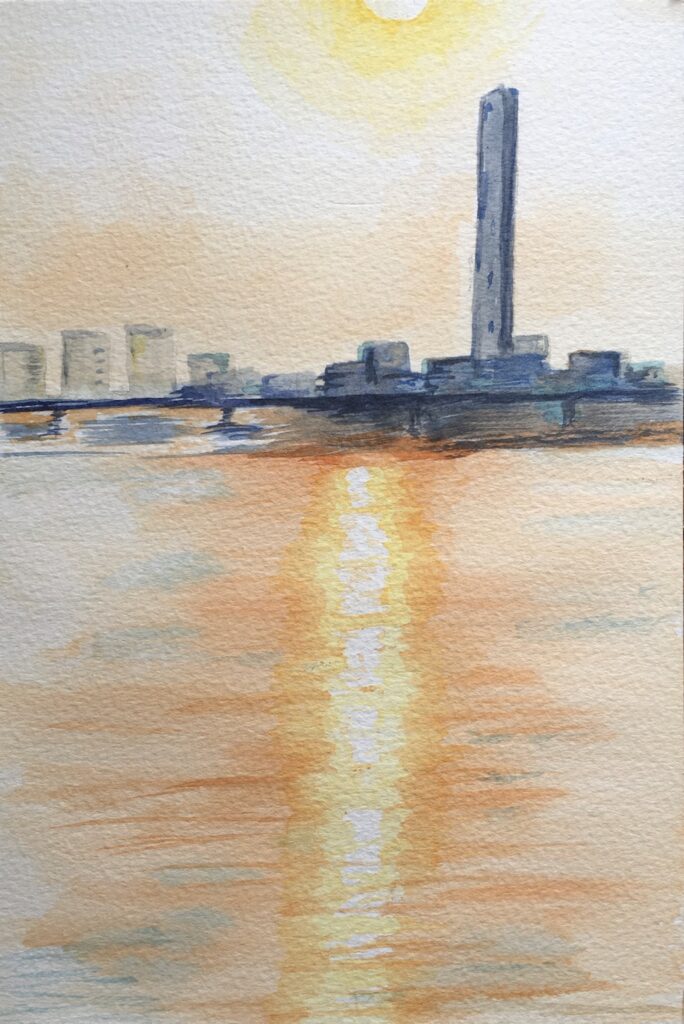
Watercolour
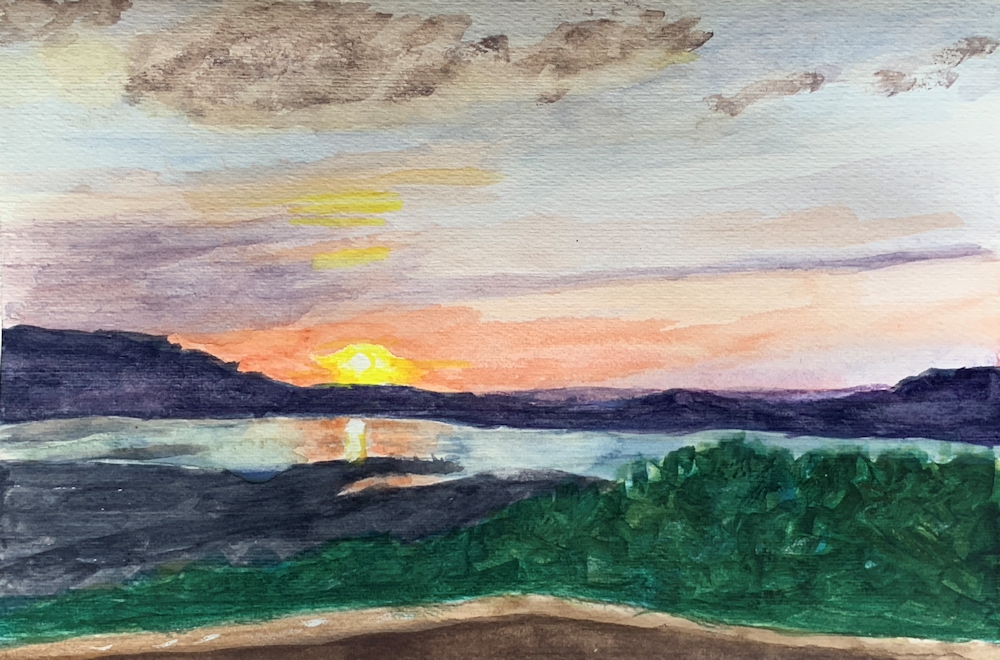
Watercolour
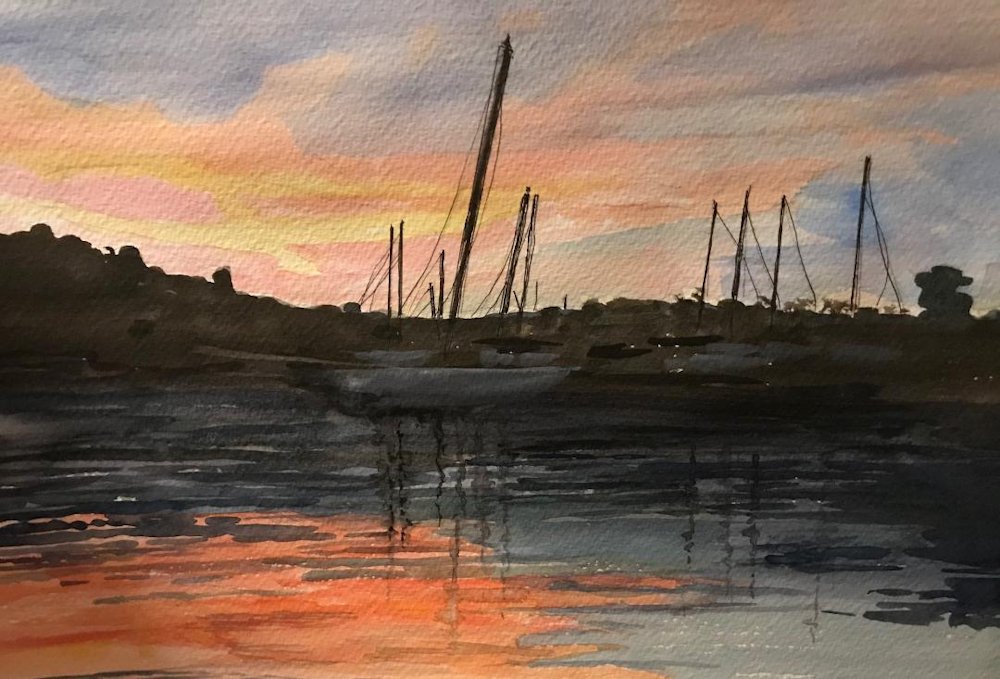
Watercolour by Sarah
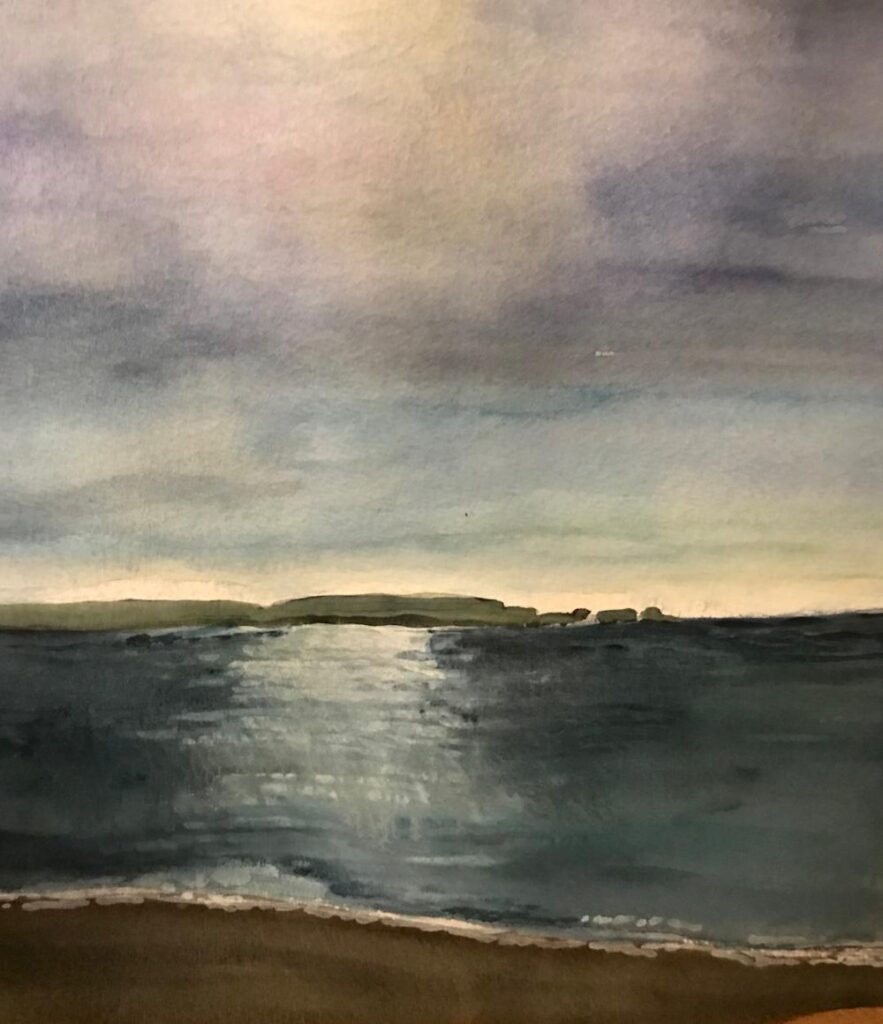
Watercolour by Sarah
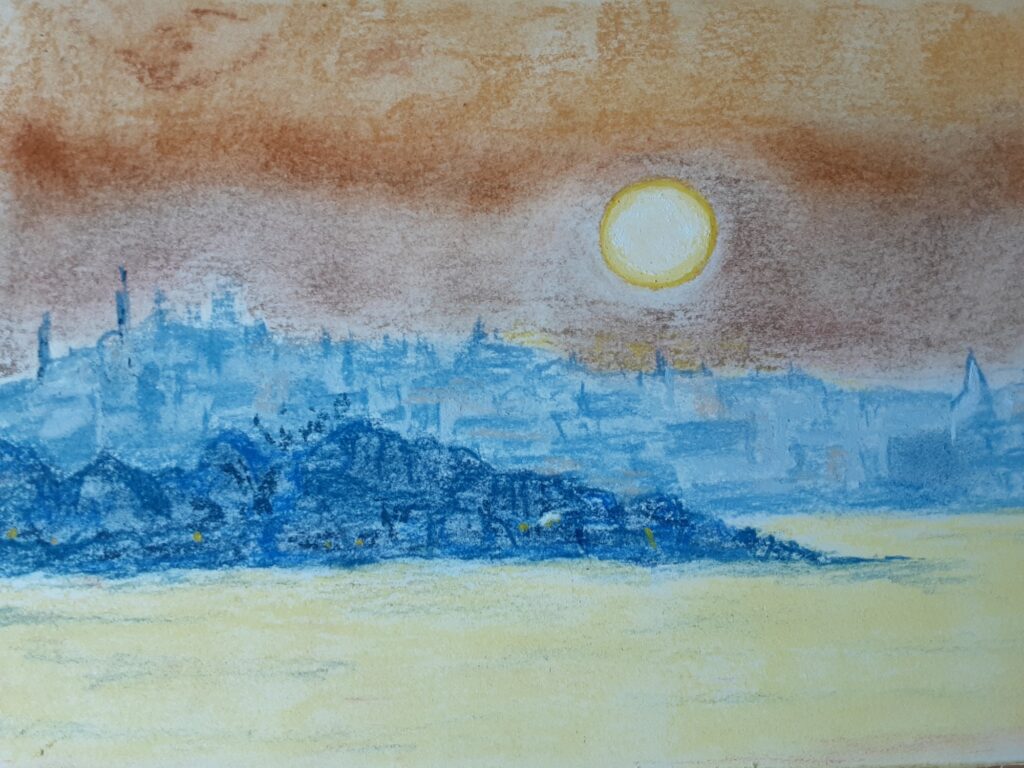
Pastel by Liz
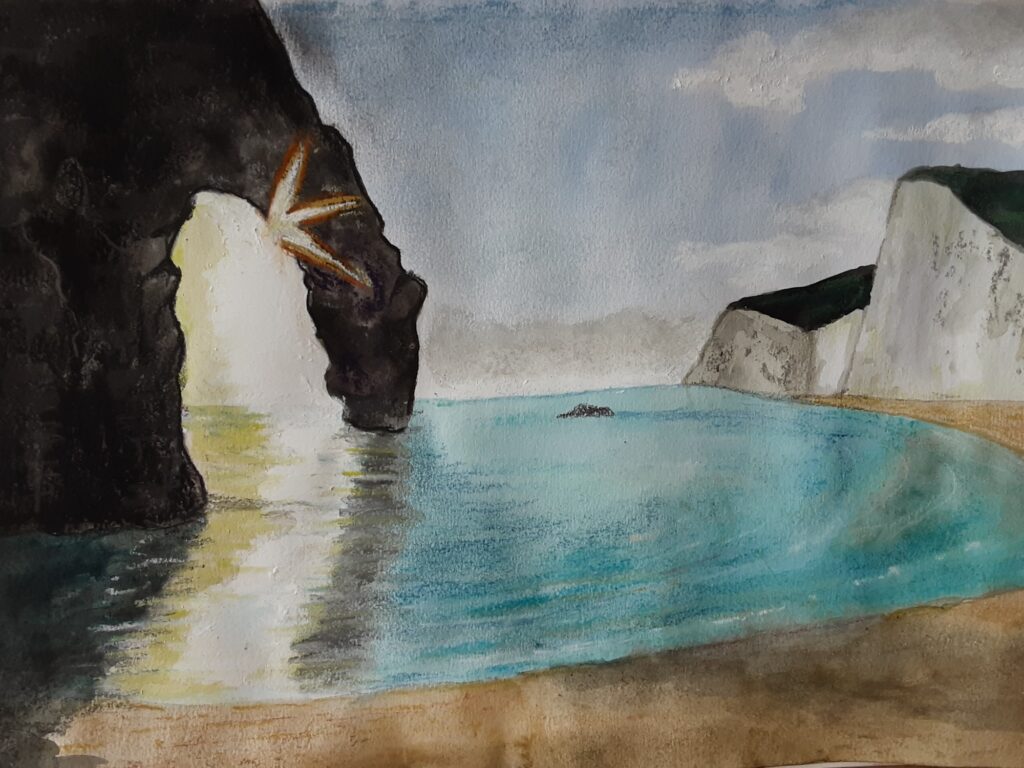
Watercolour, Pastel and Pastel Pencil
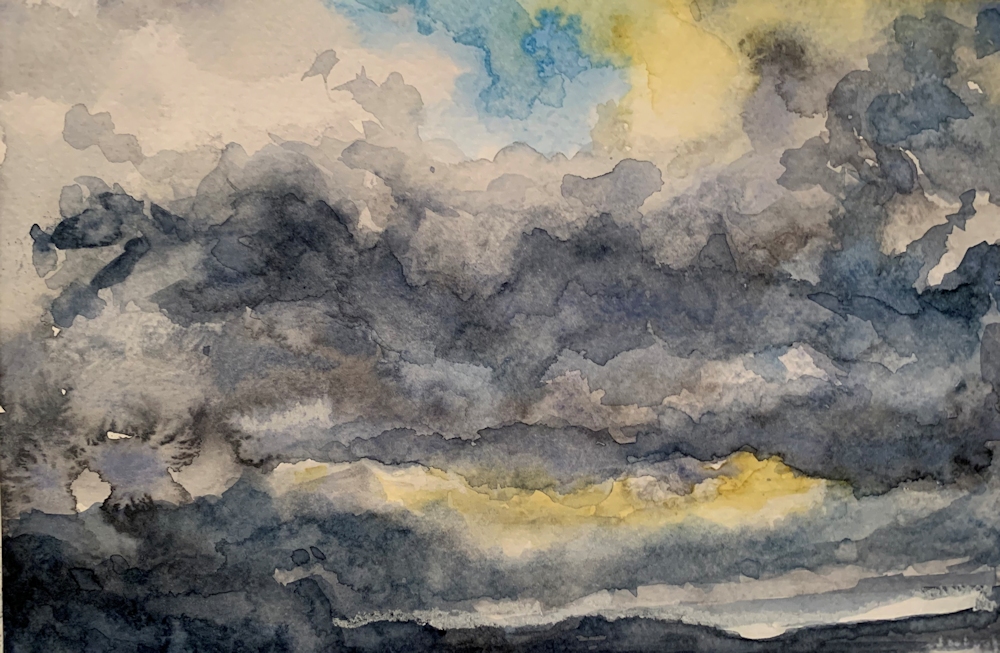
Watercolour
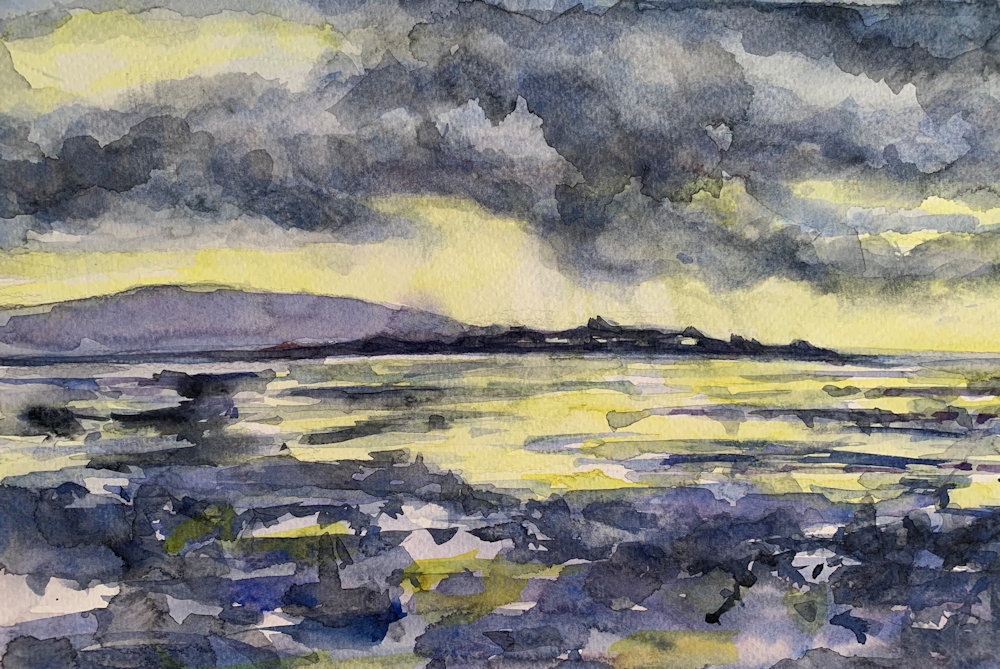
Watercolour
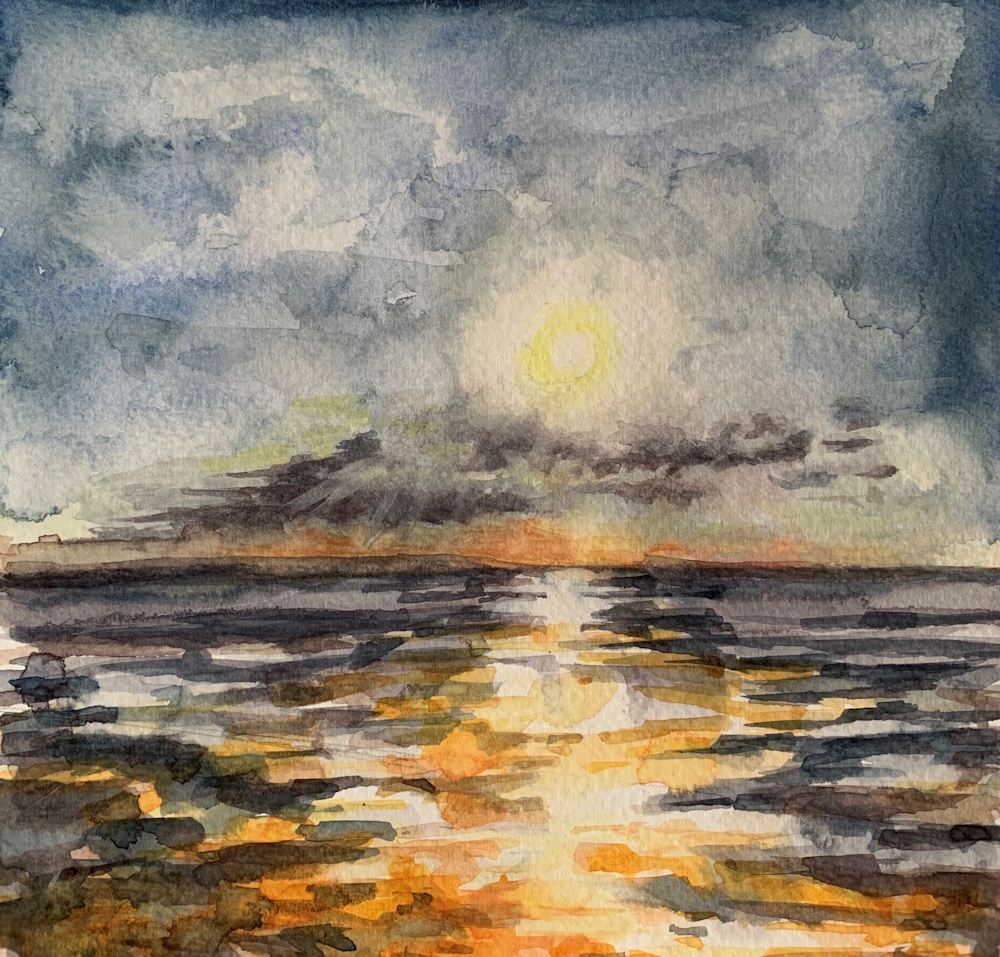
Watercolour
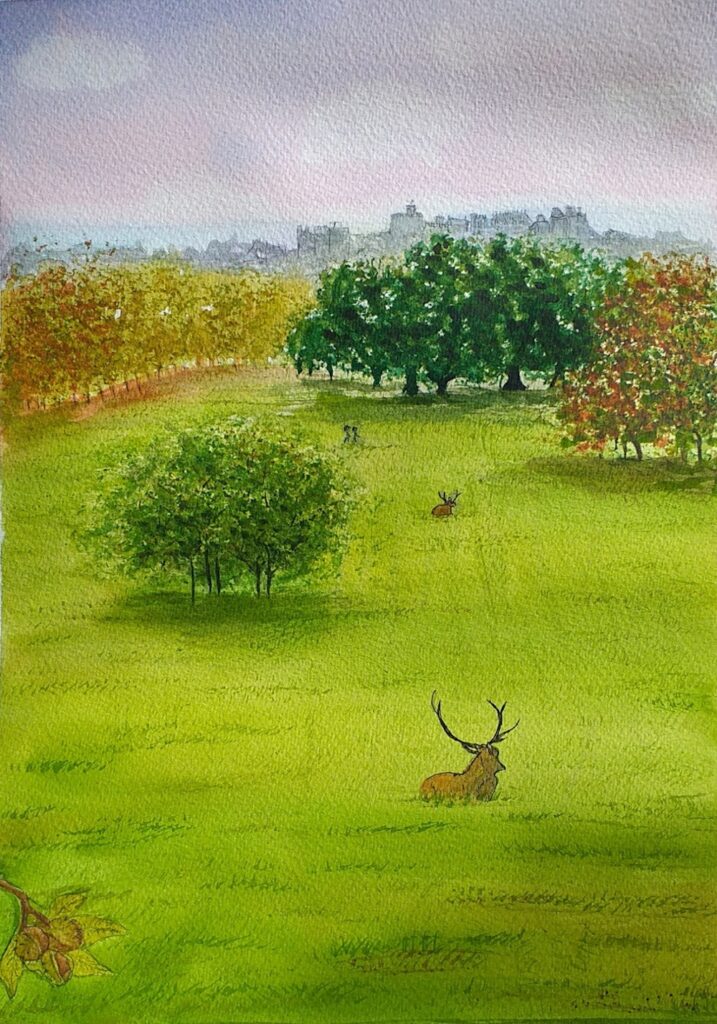
Watercolour
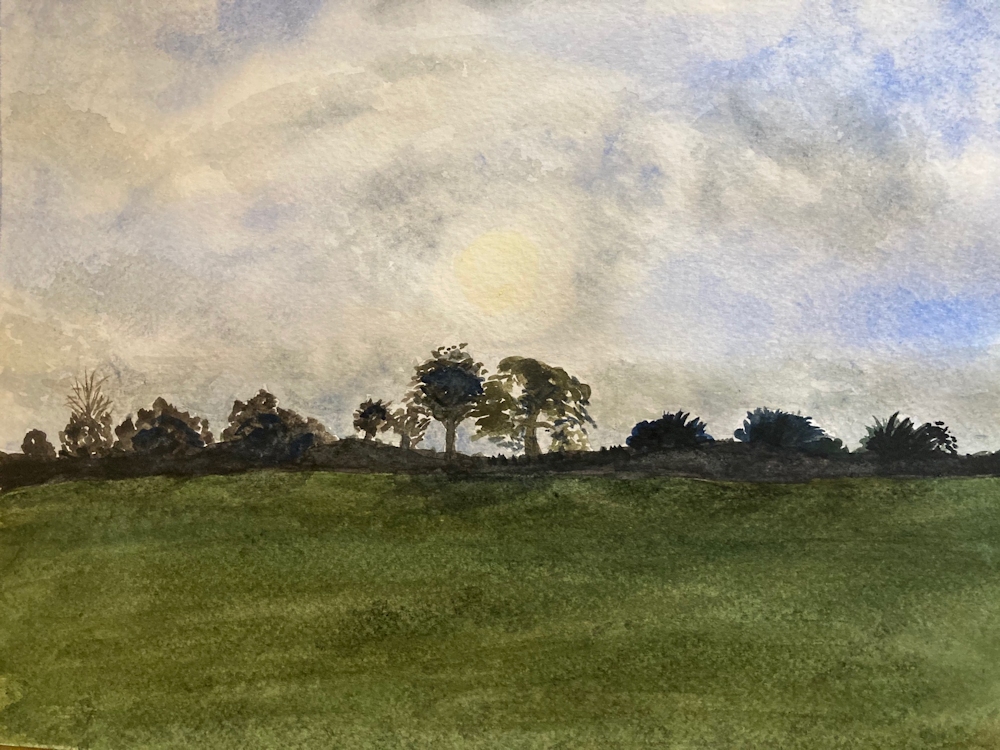
Watercolour